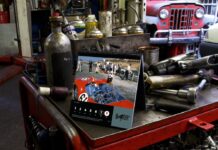To describe the AC289 Sports as a niche automobile would be an understatement; between 1965 and 1968 just twenty-five examples left the Thames Ditton factory of AC Cars Ltd., with a further two examples being sold incomplete. As production car sales go, it was not a success. In theory, the first car was given the chassis number COB6101, the last was COB6127 but the numbering system did not signify the order in which they were built. The subject of this article, COB6107, has enjoyed a long and varied life both in the UK and America and had its moment of fame as a ‘work of art’ during the period referred to as the Swinging Sixties.
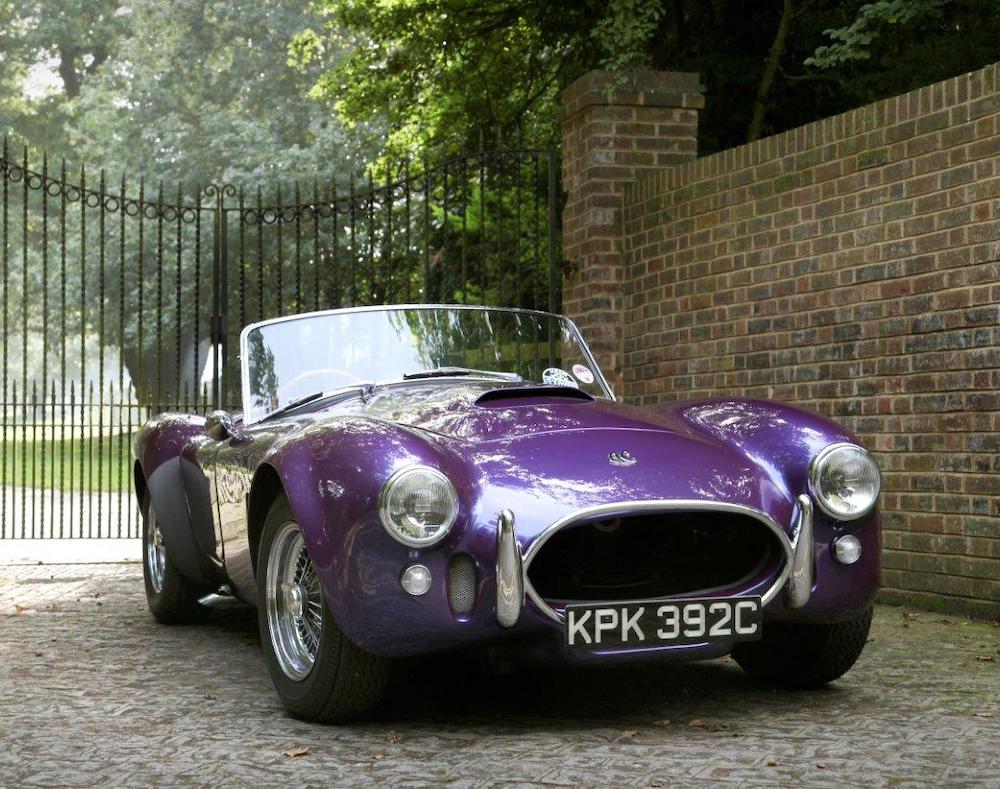
The AC289 Sports represented the final chapter in the story of the Shelby AC Cobra
A tale retold countless times – how an ex-racing driver from Texas haboured a dream to build his own sports car to go racing and show the European manufacturers (especially Ferrari) that a good old American V8 engine installed in a simple lightweight chassis could succeed against their complex race cars. It was an outrageous plan but due to a improbable series of circumstances - and incredible good luck – his dream came to fruition. Shelby, bankrolled by Ford and anyone else he could prise money from, built a race team that turned the Cobra into a winner. In 1963, its first year of competition, the Shelby Cobra won the American national sports car championship and by 1964 was competing in Europe in pursuit of the FIA World GT Championship. It came agonizingly close to winning but the following year, a coupe version of the Cobra steamrollered the opposition, albeit against modest opposition.
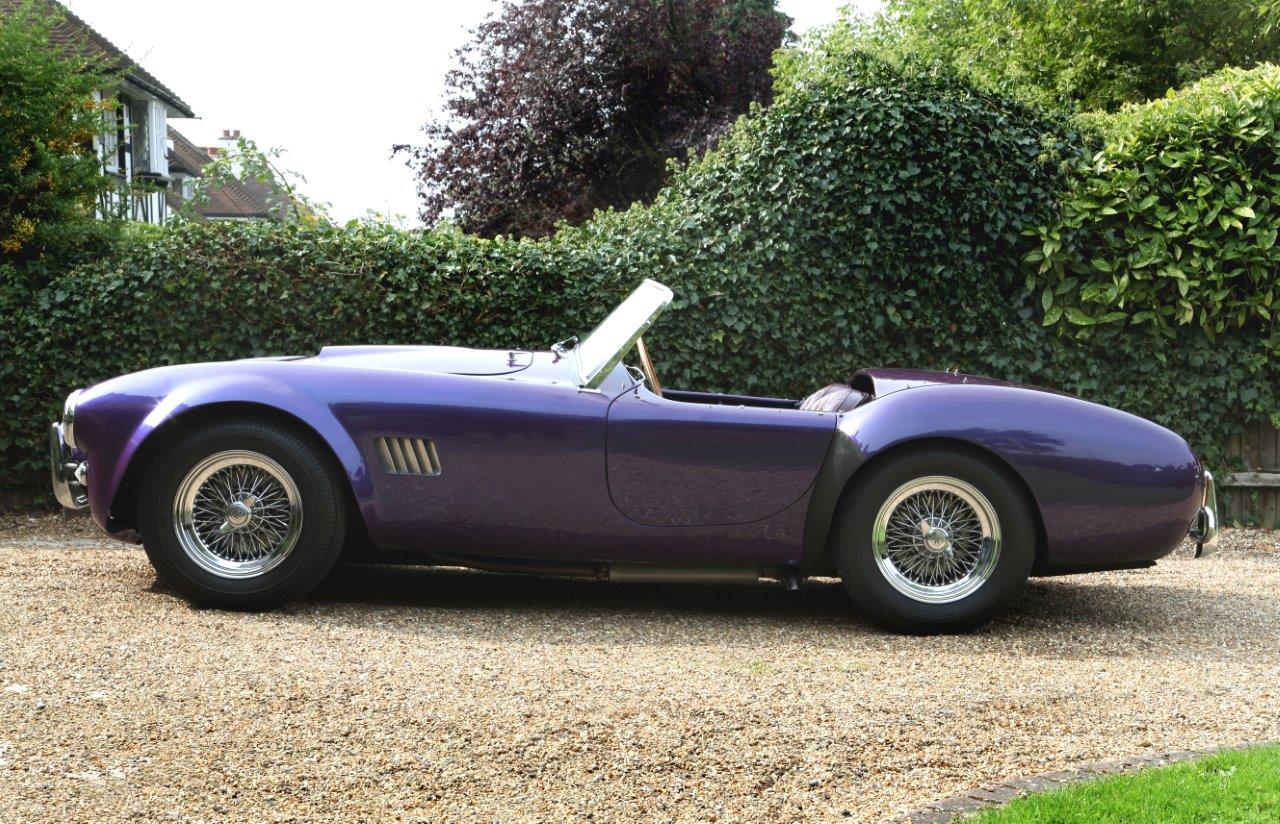
The standard production Shelby AC Cobra became a byword for high performance despite its somewhat vintage design. It ran rings around the slower, heavier Corvette and out-performed all the European offerings from Jaguar and Austin-Healey. In the UK market, AC Cars went about its business, completing the last few Ace models for the wealthy enthusiasts who considered the Cobra to be something of a hot-rod. For the first time in its history, AC created a modest production line as it attempted to meet the first substantial order of one hundred Cobras destined for the American market. It was several months before the company was able to build a handful of right-hand drive cars to sell as the AC Cobra within its home market. Due to the hand-built nature of the car and the addition of purchase tax, it was an expensive car in the UK, costing considerably more than an E-type Jaguar. With fewer comforts and a thirsty V8 in a country of expensive fuel, its appeal was limited to a few hard-core enthusiasts who valued performance above all else.
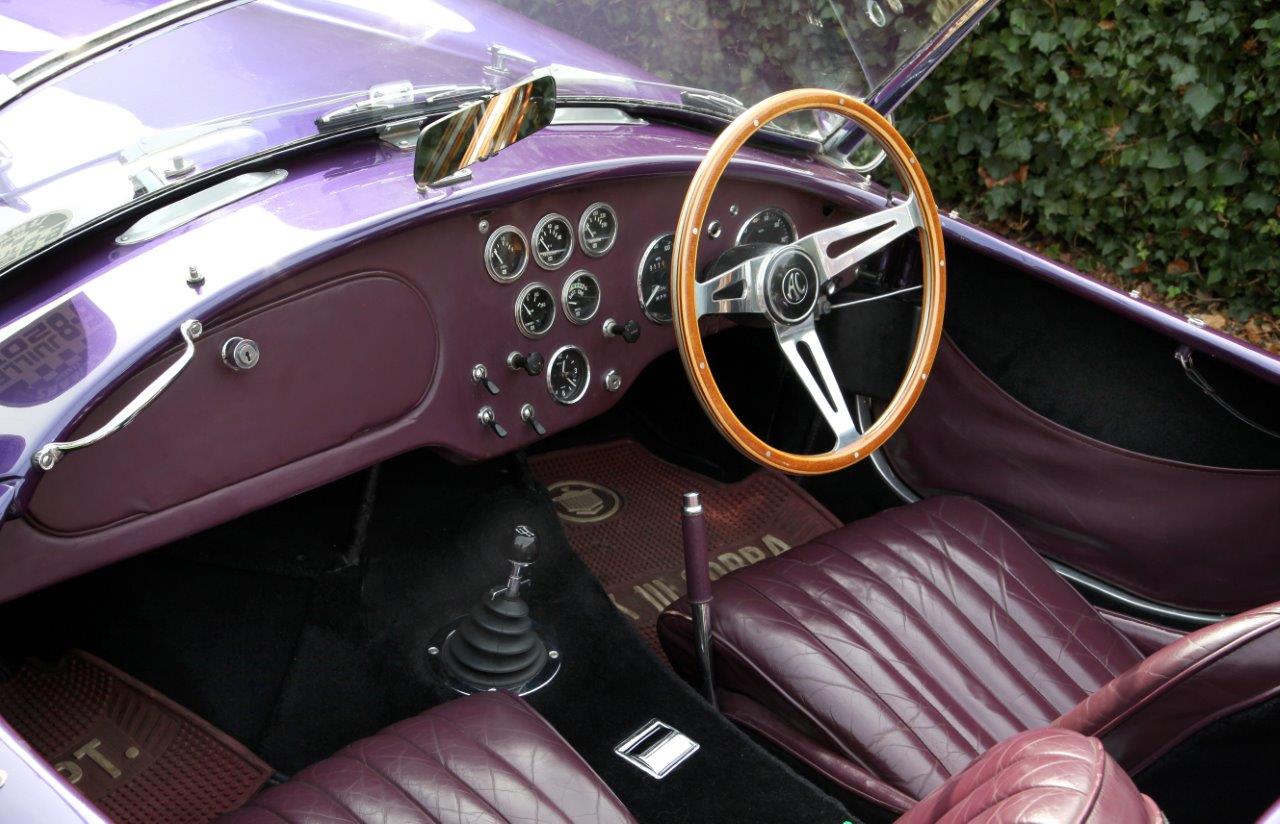
By the end of 1965, the Cobra had achieved all the goals (and more) set for it by Ford. For the 1966 season Shelby planned to campaign a 7-litre, 427cu.in. Cobra in order to remain competitive which meant upgrading the chassis and redesigning the bodywork. Known as the 427 Cobra, it offered far more power than its chassis could handle according to reports from nervous journalists. However, Ford had lost interest in racing GT cars as it was the faster prototype cars that won the FIA-backed endurance races and created headlines in the press. Shelby was instructed to give his full attention to the new and so-far unreliable Ford GT prototype to turn it in to a Le Mans winner. The 427 Cobra order was cancelled which led to AC winding down production as there was virtually no market for such a car outside the USA.

The Shelby Cobra project turned AC into a profitable business for a few years but the downside was that it had very few cars to sell outside the USA. Aware that the Cobra was a short-term project, the company had to plan for the future. Working with the existing chassis design and Ford’s 428cu.in engine, AC created a new luxury touring car with bodywork designed in Italy by Frua and launched as the AC428. AC had a quantity of unused chassis, a few 289cu.in. engines and a warehouse of parts so decided to make use of what it had available. To help with cash flow and to maintain a token presence in the UK market, in late 1965 AC announced its own variation of the Cobra: the AC289 Sports. It was a combination of the larger chassis of the 427 with coil-spring suspension but with the 4.7-litre V8 replacing the heavy 7-litre engine. On a typical British road, where bends are commonplace, this was a far more effective set-up than the nose-heavy 427 that was only faster in a straight line. AC opted to use the rear wheel-arch style of the early 427 cars, referred to as ‘narrow hip’, as opposed to the wider arches required to house much wider wheels and tyres used for the race cars. In true British tradition, AC opted for modest wire wheels.
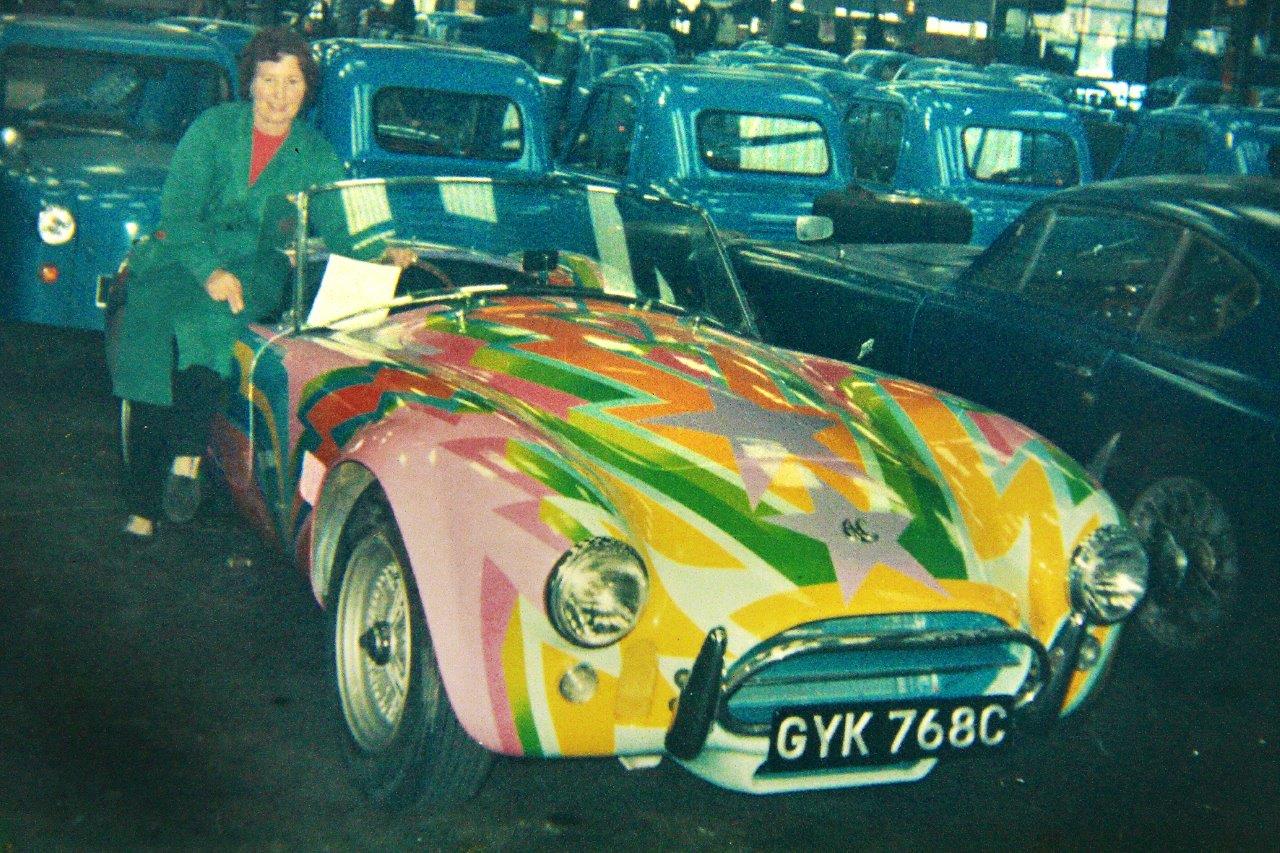
When Carroll Shelby announced the first Cobra, he made sure everyone was aware that it was a product handmade by AC Cars Ltd., clearly proud to be associated with such a respected company but he quickly he dropped all AC references and began advertising the car as a product of Shelby American – made in the USA. The AC badges were replaced apart from one that was too expensive and inconvenient to replace, the curved AC logo stamped into the foot pedals. Shelby’s actions were not appreciated by AC Cars’ management; for the AC289 Sports, all references to Cobra and Ford were omitted and the AC script logo once again adorned the front and rear of the car. (Since Ford purchased the Cobra title from Shelby and had plans for its future, it was unlikely that AC would have been allowed to use the name.)
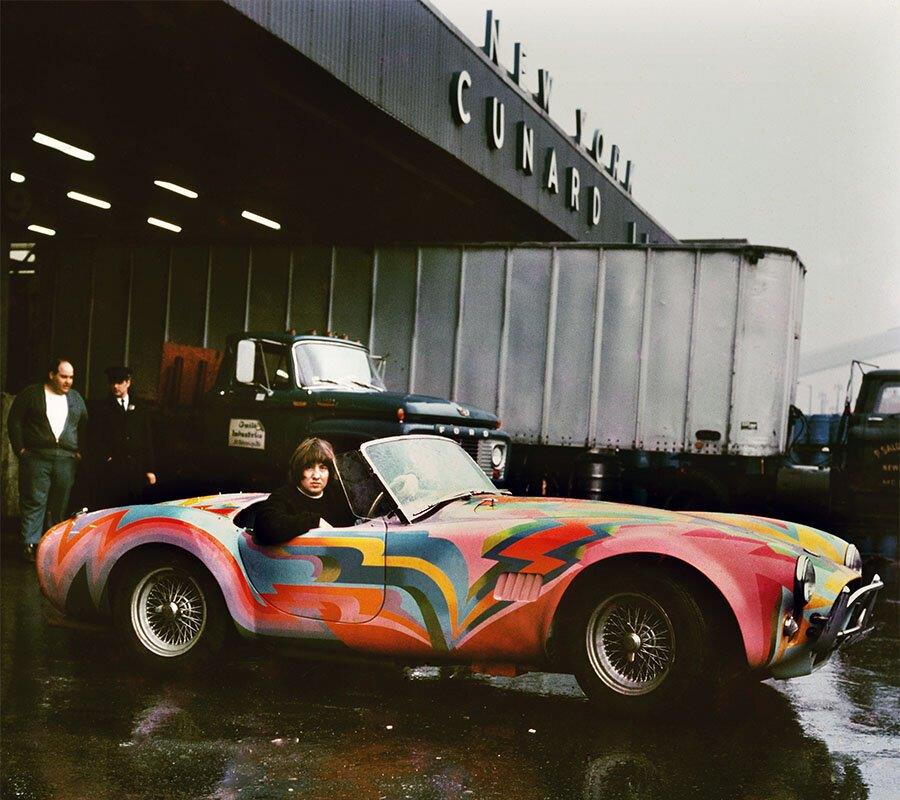
In typical AC fashion, COB6107 was not the seventh car built – it was the first and was recorded in the AC Chassis List as having been registered on 11th November 1965 and consigned to Len Street Engineering in Chelsea. It was painted Svecia red with a black interior and registered GYK 768C. Len Street dealt in a variety of sports cars and was co-owned by the Hon.
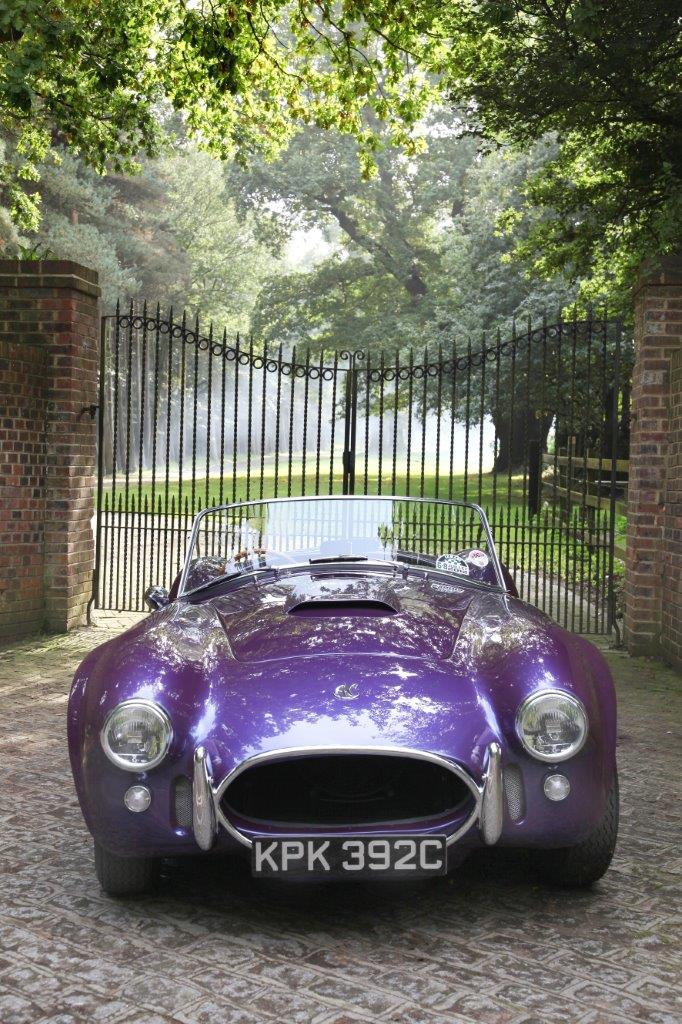 Tara Browne, a member of the wealthy Guinness brewing family. He had purchased the car as his personal transport around London but thought the red paintwork was a little too ordinary. At the time, the 20-year old socialite had to keep up appearances and decided to turn his new car into a piece of mobile art. Inspired by the creative murals that had been appearing on shops and buildings in Carnaby Street, he approached the company responsible, the BVD Design Collective, a group of three young art school graduates who were skilled in the use of the air-brush. The Cobra was one of the first cars they tranformed, along with a Buick Electra convertible and a Mini; an introduction by Tara Browne resulted in them painting Paul McCartney’s ‘Magic Piano’ which he still uses. During the summer of 1966 COB6017 underwent its multi-coloured transformation. Such was the publicity it received that by September it was displayed in the Robert Fraser Gallery in Duke Street, Mayfair, as a work of art in its own right. Getting the car into the gallery was a challenge as it would not fit through the front door. The only option was to remove the glass from the gallery window and, with the help of several strong men, man-handle the car up a pair of flimsy wooden planks, over the front wall and down the opposite side. Tara Browne sat at the wheel to steer. Quite how the car and driver survived unscathed is a mystery.
Tara Browne, a member of the wealthy Guinness brewing family. He had purchased the car as his personal transport around London but thought the red paintwork was a little too ordinary. At the time, the 20-year old socialite had to keep up appearances and decided to turn his new car into a piece of mobile art. Inspired by the creative murals that had been appearing on shops and buildings in Carnaby Street, he approached the company responsible, the BVD Design Collective, a group of three young art school graduates who were skilled in the use of the air-brush. The Cobra was one of the first cars they tranformed, along with a Buick Electra convertible and a Mini; an introduction by Tara Browne resulted in them painting Paul McCartney’s ‘Magic Piano’ which he still uses. During the summer of 1966 COB6017 underwent its multi-coloured transformation. Such was the publicity it received that by September it was displayed in the Robert Fraser Gallery in Duke Street, Mayfair, as a work of art in its own right. Getting the car into the gallery was a challenge as it would not fit through the front door. The only option was to remove the glass from the gallery window and, with the help of several strong men, man-handle the car up a pair of flimsy wooden planks, over the front wall and down the opposite side. Tara Browne sat at the wheel to steer. Quite how the car and driver survived unscathed is a mystery.

The car also appeared in the national newspapers that picked up the story of society photographer Anthony Armstrong-Jones (husband of Princess Margaret) being ordered to leave a royal park in Primrose Hill, north London by a female park warden who was far from amused that the Cobra and Buick were trespassing on private property where cars and commercial photography were strictly forbidden. Armstrong-Jones had been commissioned to photograph the cars for a magazine article and decided the park was a good location for a few extra photos. When the warden was told the name of the photographer that had incurred her wrath, she was unimpressed: rules are rules. However, 6107 did appear in a number of magazine articles including the French publication, Paris Match.

A little over a year after taking delivery of the 289 Sports, Tara Browne lost his life in a traffic accident and 6107 became part of his estate. It disappeared from view although it almost certainly spent time at the premises of AC Cars. Rumours claimed that it had been painted black and sold but one of the BMV collective, David Vaughan, took his young daughter, Sadie (who later found fame as the actress Sadie Frost), to visit the psychedelic car in 1969 and told her he was about to go with the car to New York where it would go on display at Macie’s. Vaughan had obviously reached an agreement with the Browne trustees as, in 1970, the car arrived in the USA; whether it was shown in Macie’s is unknown. Vaughan gave numerous press conferences and eventually his trans-American adventure ended in San Francisco but the tour was not the success he hoped for as his notoriously eccentric behaviour did not go down well with the journalists. Eventually he lost interest and the car ended up being parked unceremoniously on the driveway of a private house; Vaughan handed over the keys and returned to the UK. In 1970 ownership of the car passed to Jerry Siemons who purchased the car from the Browne trustees (who doubtless wondered where their car was). It was advertised for sale in the same year and by 1974 the new owner had made the decision to repaint the car in a more traditional manner, choosing a Rolls-Royce colour, Light Burgundy Metalflake. In 1984 it was sold via the Californian dealership Fantasy Junction by which time it had been retrimmed using plum coloured leather to match the bodywork. A matching pair of rubber floor mats had been made with the words ‘MK III COBRA’ etched in white. The car was shipped to Texas but soon returned to the UK where, in 1988, it was offered for sale by classic car specialists Bramley in Surrey, registered KPK 392C.
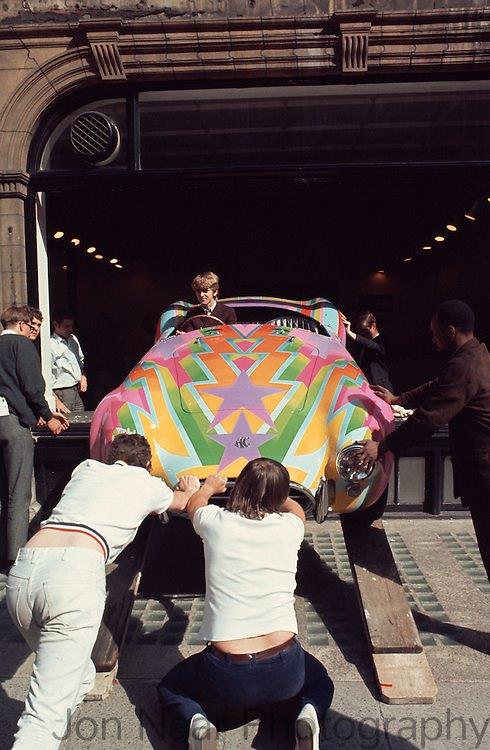
The next time 6107 surfaced was in July 2013 when it was offered for auction by Coys at Blenheim Palace. Purchased over the phone by its new owner (who wondered what on earth he had done) 6107 was granted a new lease of life. Over the following years it was sensitively revived with numerous mechanical issues corrected by those who genuinely understood the Cobra. The engine was of particular interest as it was found to be a high-performance version of the 289 with some very rare items added. This would be logical as AC Cars built the 289 Sports to make use of the numerous items left over from the Cobra production days and doubtless this early, valuable engine had been sitting in a corner of the factory, ignored until it could be put to good use.
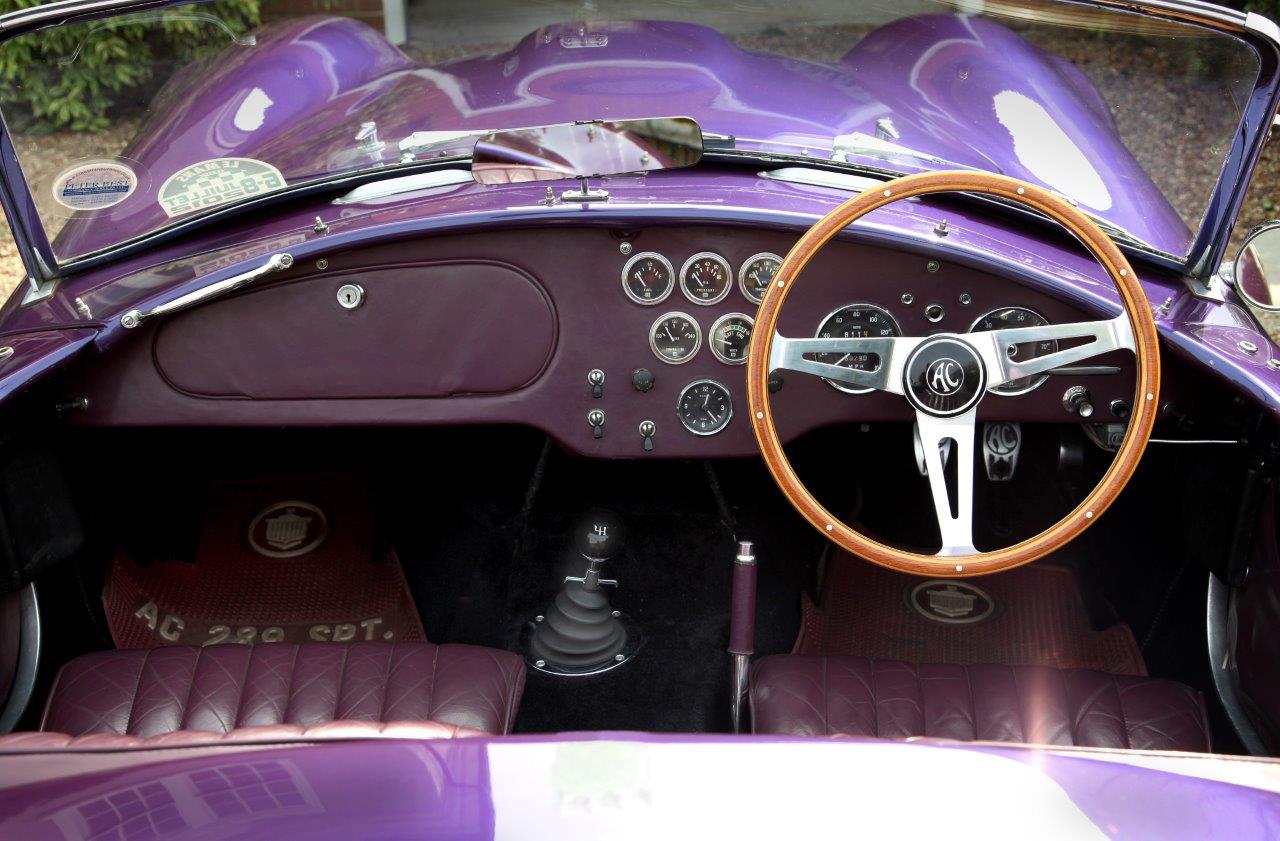
The car was not purchased to be an investment, locked away unseen, as the owner had always dreamed of owning a Cobra and since he could now afford one he used it as a road car, visiting the local supermarket and garden centre car parks on a regular basis, weather permitting. He resisted the temptation to restore it to its psychedelic ‘glory’ despite the assurances of the surviving member of the BEV Collective that it could be done, albeit at a price. In all probability the paintwork still exists under the purple as close examination inside the nose of the car, where a few flakes of purple could be chipped way unseen, there is evidence of red, yellow and blue paint dating back to 1966. No doubt the story of COB6107 will continue to evolve as it puts more miles on the clock.


